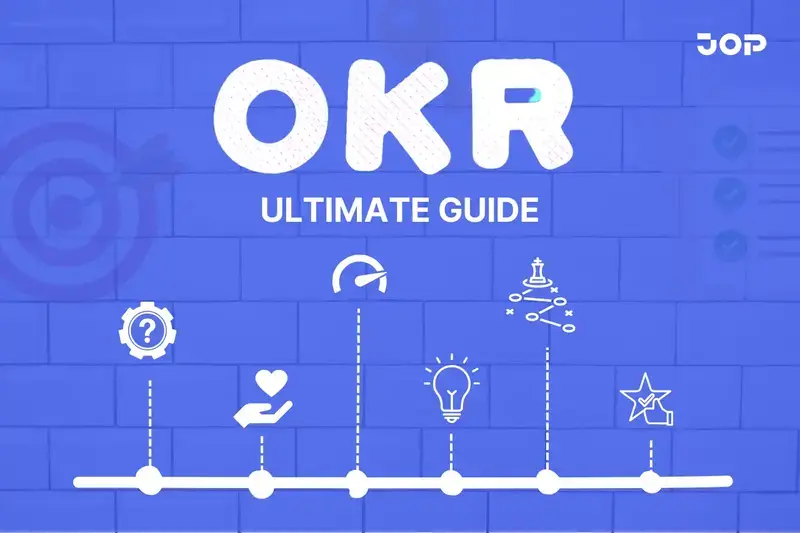Maximize Business Success with OKRs and KPIs A Comprehensive Guide
Discover the key differences and similarities between OKRs (Objectives and Key Results) and KPIs (Key Performance Indicators) in business performance management, and learn how to effectively implement them using goal setting software.

In the realm of business performance management, two acronyms frequently surface: OKRs (Objectives and Key Results) and KPIs (Key Performance Indicators). Both are essential tools for setting goals and measuring progress, and utilizing the right OKR software tools can further enhance your ability to manage objectives. This guide will delve into the differences, similarities, and complementary nature of OKRs and KPIs, providing a comprehensive understanding of how to leverage both frameworks to drive organizational success and improve team performance.
Understanding OKRs
OKRs, or Objectives and Key Results, are a robust goal-setting framework designed to help organizations define and track their objectives and the outcomes needed to achieve them. The framework consists of two main components:
- Objectives: High-level, qualitative goals that provide direction and inspiration. Objectives should be ambitious, clear, and aligned with the organization's vision and mission.
- Key Results: Specific, measurable outcomes that indicate progress towards achieving the objectives. These should be quantifiable, time-bound, and challenging yet achievable.
Popular among companies like Intel and Google, many organizations now use OKR management tools to streamline their implementation process. With the help of goal setting software, businesses can efficiently track both objectives and team performance.
Understanding KPIs
KPIs, or Key Performance Indicators, are specific, quantifiable measures of success that allow organizations to track performance over time. They offer a clear picture of how well an organization is performing in specific areas and are crucial to successful OKR management.
KPIs can be applied at various levels within an organization, from high-level strategic goals to departmental and individual performance metrics. Specialized OKR management tools can integrate KPI tracking to ensure alignment with strategic goals.

Key Differences Between OKRs and KPIs
1. Purpose
- OKRs: Facilitate alignment, ambitious goal setting, engagement, and transparency. They connect strategy with execution and align everyone around the same organizational goals.
- KPIs: Evaluate the success of specific business activities and provide the precise metrics needed to review performance.
2. Scope
- OKRs: Set at the organizational, team, or individual level focused on ambitious aspirations, supported by OKR software free trials to enhance understanding.
- KPIs: Defined at the departmental level with a focus on tracking specific measurable outcomes.
3. Duration
- OKRs: Often set quarterly, allowing for agile adjustment using OKR software tools.
- KPIs: Include both short-term and long-term metrics for continuous monitoring.
4. Flexibility
- OKRs: Flexible and adaptable, encouraging experimentation, best managed with a dedicated OKR management tool.
- KPIs: More stable and used for continuous performance tracking.
5. Nature of Goals
- OKRs: Focus on aspirational goals that drive growth, utilizing OKR software to capture and align objectives efficiently.
- KPIs: Specific quantifiable metrics that target particular business performance aspects.
How OKRs and KPIs Work Together
While OKRs and KPIs serve different purposes, they can complement each other effectively:
1. Providing Context and Direction
OKRs deliver the critical context and direction that KPIs alone may lack, ensuring comprehensive OKR management using specialized tools.
2. Enhancing Alignment and Focus
OKRs align teams towards common goals, and integrating them with KPIs using goal tracking software can enhance precision and focus.
3. Driving Continuous Improvement
Regularly updating and tracking OKRs encourages continuous improvement. Goal tracking and other functionalities from advanced OKR software streamline this process.
Examples and Best Practices
OKR Examples for Software Teams
Objective: Enhance product reliability and performance
Key Results:
- Reduce system downtime by 30%
- Improve average page load time from 3 seconds to 1.5 seconds
- Decrease critical production bugs by 50%
- Achieve 99.9% service availability
OKR Examples for Marketing Teams
Objective: Increase brand awareness
Key Results:
- Grow organic website traffic by 40%
- Increase social media engagement from 2% to 5%
- Generate 25 media mentions
- Improve email marketing open rates to 25%
Best Practices for OKR Implementation
- Define Clear Objectives: Establish a roadmap with clear, ambitious goals.
- Set Relevant Key Results: Use SMART criteria to create actionable results.
- Leverage Goal Setting Software: Use OKR software tools for tracking and evaluation.
- Create Accountability: Foster a culture that encourages cross-team collaboration.
How to Implement OKRs in Different Business Contexts
How to Implement OKRs in a Small Business
- Start small: Begin with a few company-level objectives.
- Keep it simple: Focus on critical growth areas.
- Use lightweight tools: Consider starting with OKR software free trials.
How to Implement OKRs in Larger Organizations
- Build Structure: Secure executive sponsorship and pilot with receptive teams.
- Invest in Software: Utilize robust OKR management tools for scalability and alignment.
Conclusion
Understanding the differences, similarities, and complementary nature of OKRs and KPIs enables organizations to enhance team performance. By following the best practices outlined in this guide, your organization can leverage OKR management tools to drive alignment, enhance productivity, and achieve meaningful results.
For a simple and easy-to-use OKR management software, check out AntOKR to transition seamlessly and unlock the potential of your business objectives.
Related Posts

The Ultimate Guide to Selecting the Ideal OKR Software for 2025
Discover how to choose the best OKR software for your organization in 2025. Explore essential features, helpful checklists, and the benefits of AntOKR, the leading OKR management tool.

Effective OKR Examples for Advancing Learning and Development Initiatives
Discover practical OKR examples for learning and development initiatives. Learn how to implement OKRs that enhance employee training, competency development, and foster a continuous learning culture.

Essential Steps for Implementing Strategy with OKR Software in Business
Explore essential steps for successful strategy implementation using OKR software in business. Learn about key components, the 3 Cs, and actionable steps to enhance execution and drive growth.